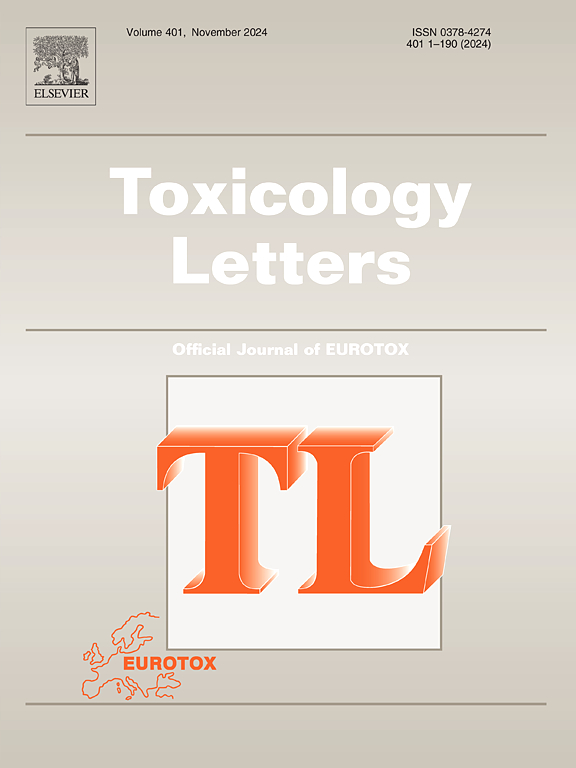In silico and in vitro analysis of the genotoxic and mutagenic potential of STING modulators
IF 2.9
3区 医学
Q2 TOXICOLOGY
引用次数: 0
Abstract
The STING pathway plays a crucial role in dsDNA homeostasis and has been implicated in several diseases, including cancer and autoimmune disorders. Consequently, efforts have been made to develop modulators (agonists and antagonists) of the STING pathway. However, it is imperative to clinically evaluate the mutagenic and genotoxic potential effects of these novel molecules. For this purpose, an exhaustive list of STING modulators was subjected to knowledge- and expert-based in silico mutagenicity evaluations. A few antagonists were predicted to be positive for mutagenicity by Derek, and a few agonists were predicted to be positive (moderate reliability) by Vega. Based on the varying results of the computational approaches (Derek and Vega) for prediction of mutagenicity, two of each STING agonists and antagonists were evaluated using the bacterial reverse mutation test (Ames test; with and without metabolic activation) at concentrations of 1.935–250 μg/well. Additionally, the compounds (5, 10, and 20 μM) were subjected to single-cell gel electrophoresis (comet) assay to evaluate DNA damage in HepG2 cells. In silico analysis predicted that multiple STING modulators are mutagenic. In addition, the Ames test results demonstrated that only C-178, a STING antagonist, is mutagenic, while the other antagonist (SN-001) and both agonists (CMA and SR-717) are not mutagenic at the concentrations evaluated. C-178 is mutagenic, even without metabolic activation. Although not significantly different, there was a dose-dependent increase in comet tail length with C-178, thereby confirming genotoxicity, even in mammalian cells. The other STING modulators were inactive as per the comet assay. In summary, although mutagenic potential is not chemical class-specific, our findings highlight the carcinogenic potential of STING modulators, such as the covalent binder C-178. Caution must be exercised when developing novel STING modulators to avoid toxicological liabilities. Additionally, knowledge- and expert-based in silico evaluation of mutagenicity could help quickly identify toxicological potential.
STING调节剂的基因毒性和致突变潜能的体外和体内分析
STING通路在dsDNA稳态中起着至关重要的作用,并与多种疾病有关,包括癌症和自身免疫性疾病。因此,人们努力开发STING通路的调节剂(激动剂和拮抗剂)。然而,临床评估这些新分子的致突变性和潜在的遗传毒性是必要的。为此,对STING调节剂的详尽清单进行了基于知识和专家的硅致突变性评估。Derek预测一些拮抗剂的致突变性为阳性,Vega预测一些激动剂的致突变性为阳性(可靠性中等)。基于计算方法(Derek和Vega)预测致突变性的不同结果,使用细菌反向突变试验(Ames试验;浓度为1.935 ~ 250 μg/井。此外,对化合物(5、10和20 μM)进行单细胞凝胶电泳(comet)检测,以评估HepG2细胞的DNA损伤。硅分析预测多个STING调节剂具有诱变性。此外,Ames试验结果表明,只有STING拮抗剂C-178具有致突变性,而另一种拮抗剂(SN-001)和两种拮抗剂(CMA和SR-717)在评估浓度下不具有致突变性。即使没有代谢激活,C-178也具有诱变性。尽管没有显著差异,但C-178在彗星尾部长度上有剂量依赖性的增加,从而证实了遗传毒性,即使在哺乳动物细胞中也是如此。根据彗星试验,其他STING调节剂是无活性的。总之,虽然致突变潜能不是化学类别特异性的,但我们的研究结果强调了STING调节剂的致癌潜能,如共价结合物C-178。在开发新的STING调节剂时必须谨慎,以避免毒理学责任。此外,基于知识和专家的致突变性计算机评估可以帮助快速确定毒理学潜力。
本文章由计算机程序翻译,如有差异,请以英文原文为准。
求助全文
约1分钟内获得全文
求助全文
来源期刊

Toxicology letters
医学-毒理学
CiteScore
7.10
自引率
2.90%
发文量
897
审稿时长
33 days
期刊介绍:
An international journal for the rapid publication of novel reports on a range of aspects of toxicology, especially mechanisms of toxicity.
 求助内容:
求助内容: 应助结果提醒方式:
应助结果提醒方式:


